ACTIVITIES IN MADRID
Madrid is the heart of Spain, with Castilla as the center, the seat of the government, and a vibrant cultural capital, with world-class museums and scenic spots. Its food and nightlife scenes are enough for people to travel here. I visited Madrid as part of a few weeks’ trip, visited the highlights of Castilla and Andalusia, and liked the vibrant atmosphere and interesting environment here.
What’s special about Madrid? Let’s start from the three museums of Prado, Queen Sophia and Tison Bonemsa, which are enough to satisfy the art appetite of the most greedy cultural fans. But there are many other attractive options. Goya’s fans can find the unexpected fun of his murals in the chapel of San Antonio Della – Florida. Art lovers can find the works of artist Huajin Solora that are rarely known. His pleasant collection and garden are in his museum in the suburbs of the city.
As the capital of Spain and the third largest city in Europe after London and Berlin, Madrid is inextricably linked with the royal family. The imperial palace here is gorgeous and impressive, and its scale is the same or higher than that of Versailles in France.
By visiting Plaza Mayor and the Puerta del Sol, you can feel the flavor of life in Madrid Square. Sit down in a caf é or restaurant and enjoy the past scene surrounded by hundreds of years of Spanish history (and local people now).
Then there are food attractions, from Hemingway’s oldest restaurant in the world to the market with a long history, and then to the charming block, where you can taste snacks, enjoy lively bars, restaurants, dramas and even flamenco dance until late at night.
The heat of Castilla can make people feel depressed in summer, so we should consider traveling to the capital in the mild spring and autumn. If summer is the time when you can go to Madrid, you can do this, but make good use of the time in the indoor museums, palaces and churches. But at any time of the year, Madrid will repay your efforts to find its best.
Madrid is a very walkable city, but before you set out, you may consider taking part in a walking tour, which may be a pleasant way to understand some highlights of the city. There is a two-hour private walking group, covering many of the city’s top attractions. The cost is $116.82, which can accommodate up to 8 people. Or you want an 8-hour all-day private tour, including three-course lunch and wine, at $351.64 per person.
Now, let’s start exploring
Visit the amazing museum
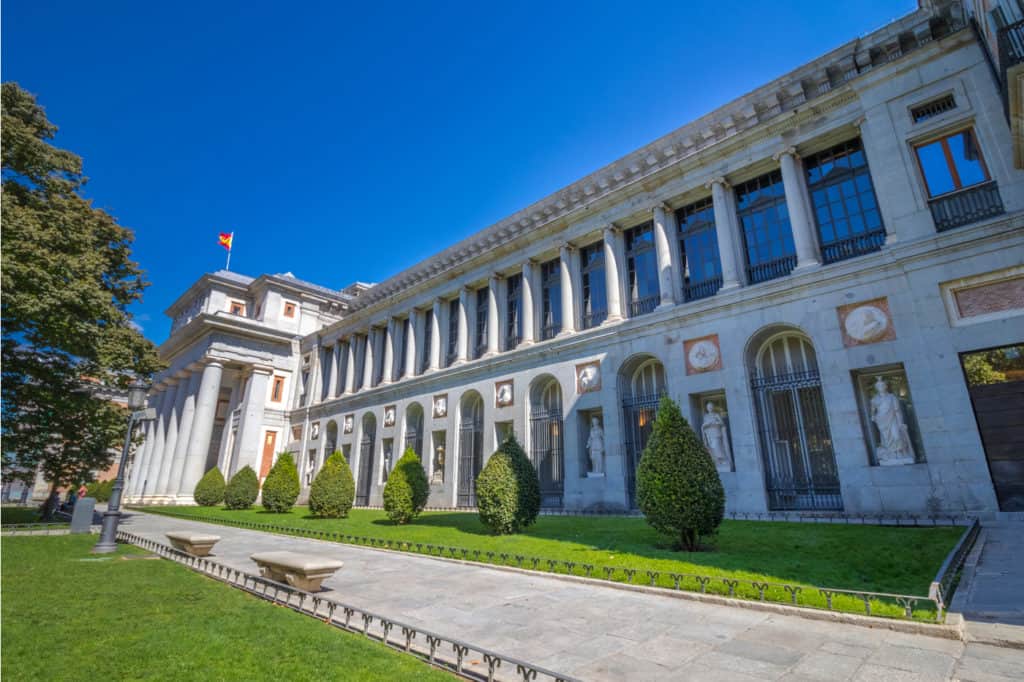
Prado
Prado is one of the most spectacular art museums in the world. Like the Louvre in Paris, the Prado Museum is very large. Don’t expect to “finish” it in one day. Pick up a map and plan what you want to see. The museum was originally a royal collection of the Habsburg family, so Spanish art is a real advantage and may be the focus of the first visit.
Among my favorite paintings that can’t be missed are the most famous paintings in the museum – Las Meninas by Velasquez and the Paradise of Human Joy by Heronimus Boss. Las Meninas is famous for describing the artists who depict the members of the royal family from a unique perspective. They appear in a mirror on the back of the work. The foreground is Little Margaret, her maid, two royal dwarfs, and even a sleeping dog. The portrait of “Los Borrachos” by Velazquez is also a masterpiece of character description.
The room filled with Goya art is the most dedicated to any artist in the Prado Museum. Every stage of his career has been recorded, from his royal portrait as a court painter to his female portrait, including those with and without clothes (see, for example, the Naked Maya). Then there are his war images, such as May 3, 1808, showing the execution of the French army in Madrid.
Goya’s so-called black paintings at the end of his career are another highlight of Prado’s collection. These violent and disturbing images were created between 1819 and 1823, different from Goya’s early works.
Spain used to control low-lying countries such as the Netherlands and Belgium, and is a political ally of Italy. So you can also see excellent representative paintings of artists from these countries, such as Rembrandt, Bruegel, Rubens, Caravaggio and Botticelli.
The general admission fee for the museum is 15 euros.
You can consider participating in the tour guide of this huge collection to help you see and better understand its highlights. The visit cost is 46.20 dollars per person.
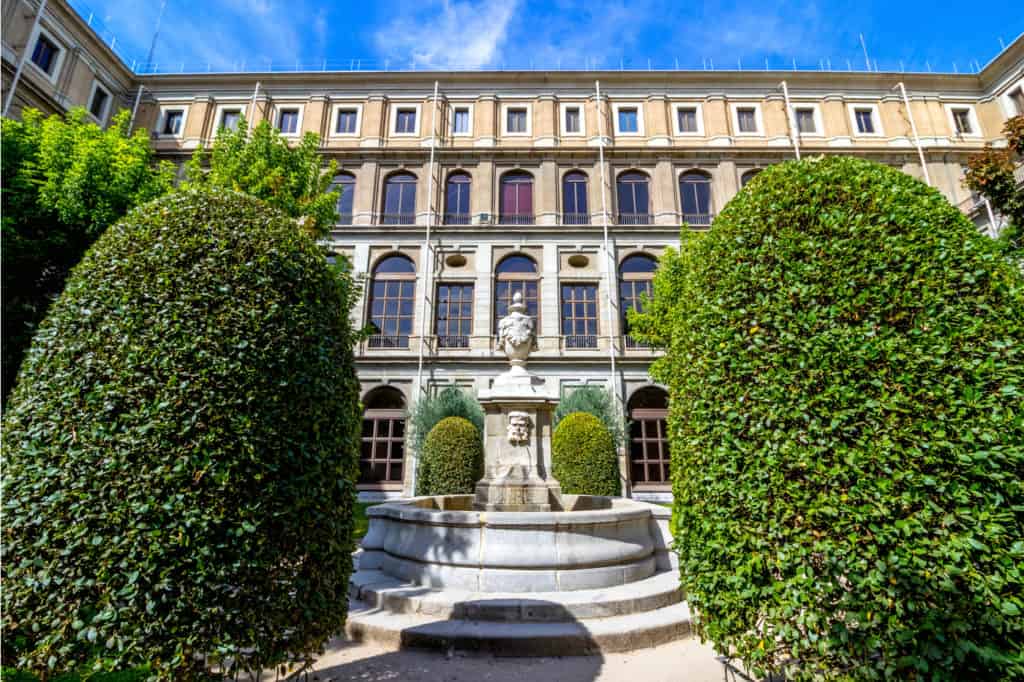
Queen Sofia Art Center
Let’s start with Picasso’s Guernica. Everyone will come here to see this famous anti-war painting, which depicts the Basque village bombed by the German Air Force in World War II. But after that? The collection of the Reina Sofia Museum, founded in 1992, is worth your time to explore, as is the Prado and the Thiessen-Bonemisa Museum, because it is the first collection of contemporary art in Madrid.
In addition to Picasso’s other works, you will also see the main works of Salvador Dali and Joan Miro, as well as the works of cubists Juan Gris and George Blake. The coverage time range is generally from the 20th century to the 1980s. There is an admission fee of 10 euros in the museum.
You can buy a jumper ticket to avoid waiting in line for admission, and carry out a two-and-a-half hour tour under the guidance of a professional guide, at $117.64 per person.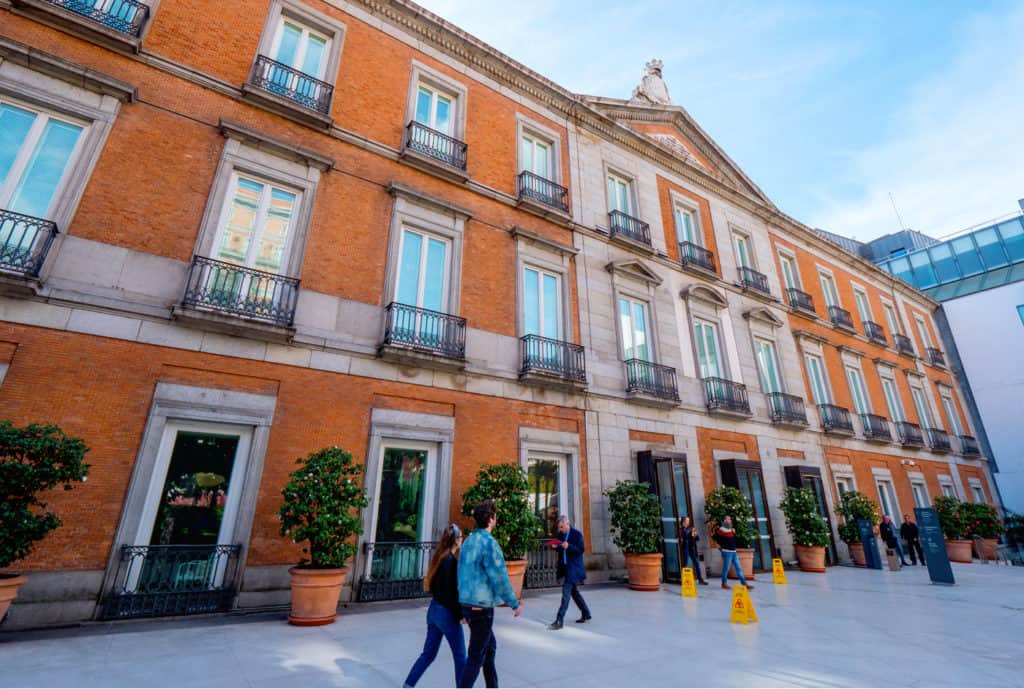
Thyssen-Bonamisa Museum
This extensive collection is a private collection of the Thiessen family in Switzerland. Through the Baron’s Spanish wife, it ended its collection in Madrid in 1992 because it exceeded the Swiss home. Although some people criticized it for its lack of focus, it reflects a family’s personal taste in art.
The Musee Tiessen-Bonemisa is considered to be worth mentioning because of its comprehensive coverage of western art history, from early Italian paintings to modern works of Roy Lichtenstein. There are spectacular works of art here, including the works of Ducho, Van Eyck, Domenico Killandaio and Albrecht Duller, as well as the excellent works of French impressionists. The general admission fee is 13 euros.
Consider the tour guide of this museum, with some professional comments made by local art and history experts. The visiting fee is 28.90 dollars per person.
A museum suitable for people with more time
If your time is limited, or this is your first trip to Madrid, please pay attention to the three museums. However, this city provides other places worth choosing for art lovers or returning customers who have more time.
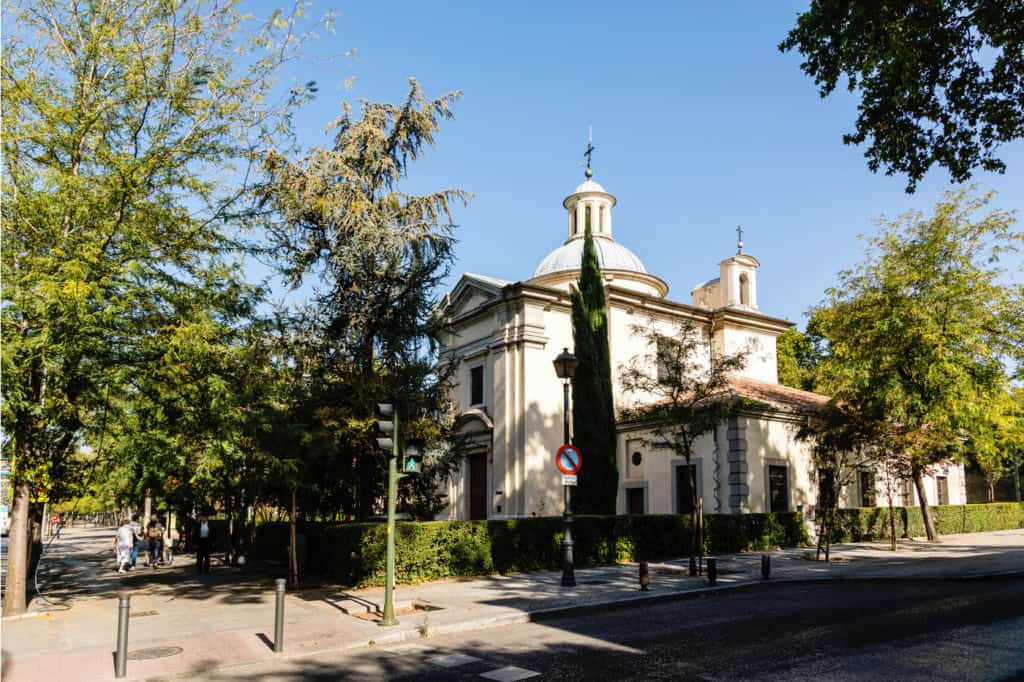
San Antonio de la Florida Monastery
The predecessor of this church is some spectacular murals of Goya. The chapel of San Antonio Della – Florida is located on the bank of the Manzanares River behind the palace, but it makes people feel far away from the crowds of tourists. These murals, painted in 1798, are one of Goya’s best works, depicting the miracles created by San Antonio, and capturing the daily life scenes and local people in Madrid in his works. Goya was buried in front of the altar here. Free visit.
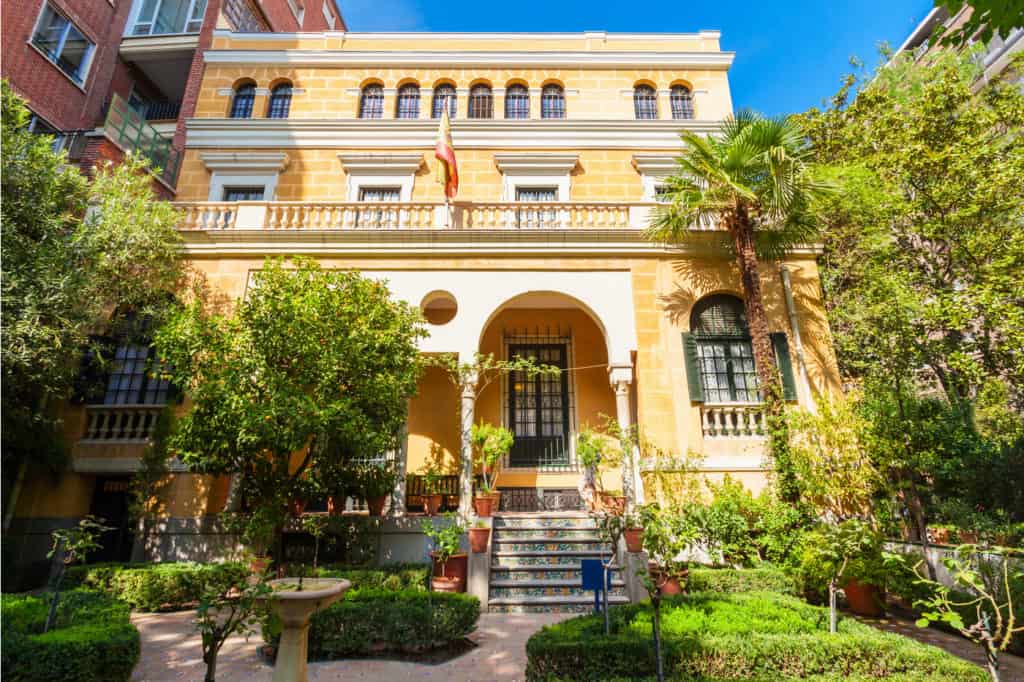
Sorolla Museum
The house, museum and garden of painter Joaquin Solora are a quiet and pleasant trip in the suburbs of Madrid. Solora’s bright art is impressionistic, and his love for Andalusia shines in the lovely garden full of fountains.
The Sorora Museum, founded in 1932, has the artist’s most complete collection of works. I was deeply attracted to visit here far from the city center. This museum has opened a window for us to understand the beautiful paintings and delightful gardens of this perhaps unknown Spanish artist. Free visit.
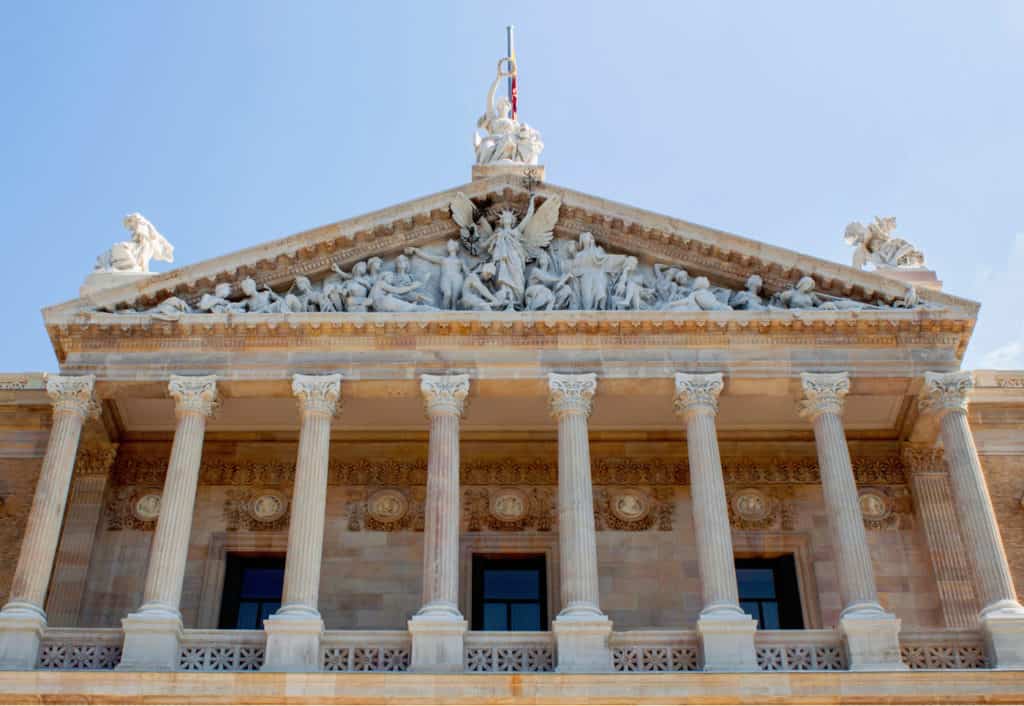
National Archaeological Museum
Explore Spain’s rich archaeological history in this excellent collection founded in 1867. The National Archaeological Museum has a wide range of collections, including the mosaic of the Roman villa, the sculptures displayed, such as the goddess Elche wearing a gorgeous headdress, cultural relics from Greece, Rome, Egypt and the Muslim era, and even partial copies of the prehistoric cave murals of Altamira. The museum is open for free.
The real San Fernando Academy of Fine Arts
If it is not for the existence of the three giants, the college will be a first-class art destination. The Royal Academy of Fine Arts has its own collection of Spanish art, including the top paintings of Zulbrand and El Greco. There are also 13 great paintings by Goya, including self-portraits, royal portraits, and even a picture of a bullfight. This is the school where some of the most famous Spanish artists such as Picasso and Dali study. The average ticket is 8 euros.
Lazaro-Galdiano Museum
A person’s obsession with collecting art treasures fills the museum. This Italian-style stone mansion at the beginning of the 20th century belongs to Don Jos é L á zaro Galdiano (1862-1947), who is a businessman and an enthusiastic art sponsor. After his death, more than 13000 pieces of art in his amazing private collection were bequeathed to the city.
The highlights of the Lazaro-Galdiano Museum include paintings by Bosch, Zulbrand, El Greco, John Constable and Lucas Kranach, as well as many works by Goya. The museum also displays a dazzling variety of sculptures, jewelry, artworks, ceramics and furniture. Admission to the museum is 7 euros.
Serab Museum
This is another house museum, full of a person’s eclectic collection. Here is the 17th Marquis of Selab (1845-1922). The mansion of Cerralbo Museum is full of his eccentric collections, from clocks and watches to religious paintings, and then to oriental works. The artwork includes paintings by celebrities such as El Greco and Zurbaran.
There are also collections of ceramics, Murano glass, crystal and porcelain, carpets, tapestries and armor. This diversity will make you dizzy. Pick your favorite and marvel at how one person can get so much. By the end of 2021, tickets will be free.
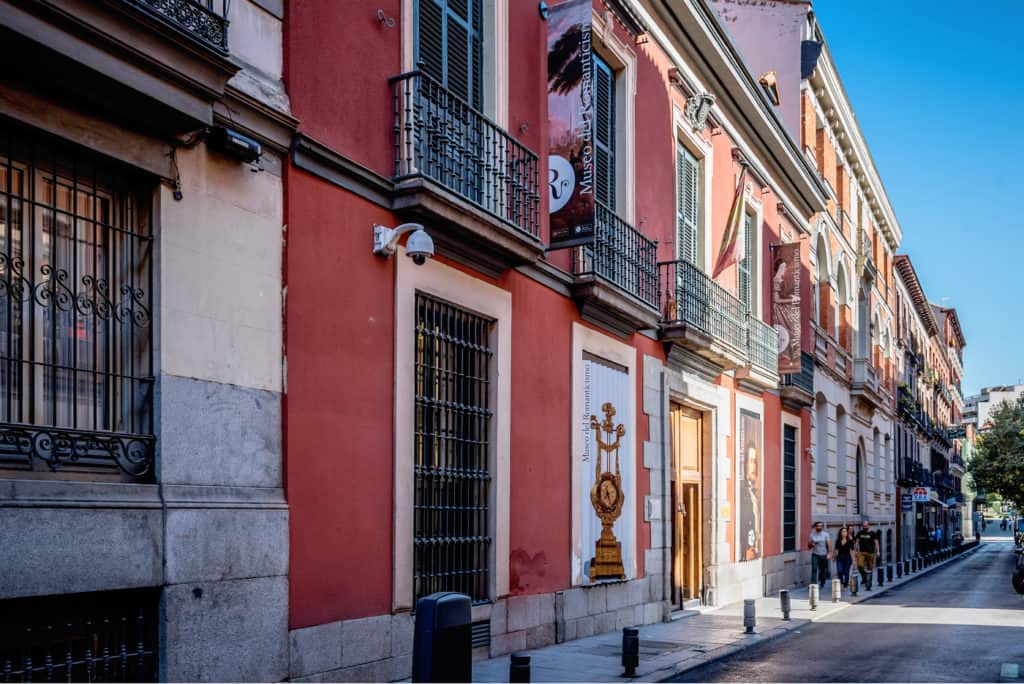
Wuguan Pass
Here is an affordable and interesting way to taste some of the less famous museums around Madrid. If you are interested in art, the special discount offered makes it worthwhile for you to spend extra time looking for these unknown jewels in the suburbs of the city.
The five museums have jointly launched this attractive five-museum pass. In 10 days, each museum can enter at a price of 12 euros. This is a good choice for those who stay in the city for a long time, or have seen major museums in previous visits, and want to know more about Madrid’s artistic heritage. The museums included include the Romantic Museum, the Sorora Museum, the Serab Museum, the Decorative Art Museum and the Lazaro-Gardiano Museum.
Surprised by the excavation of the royal family
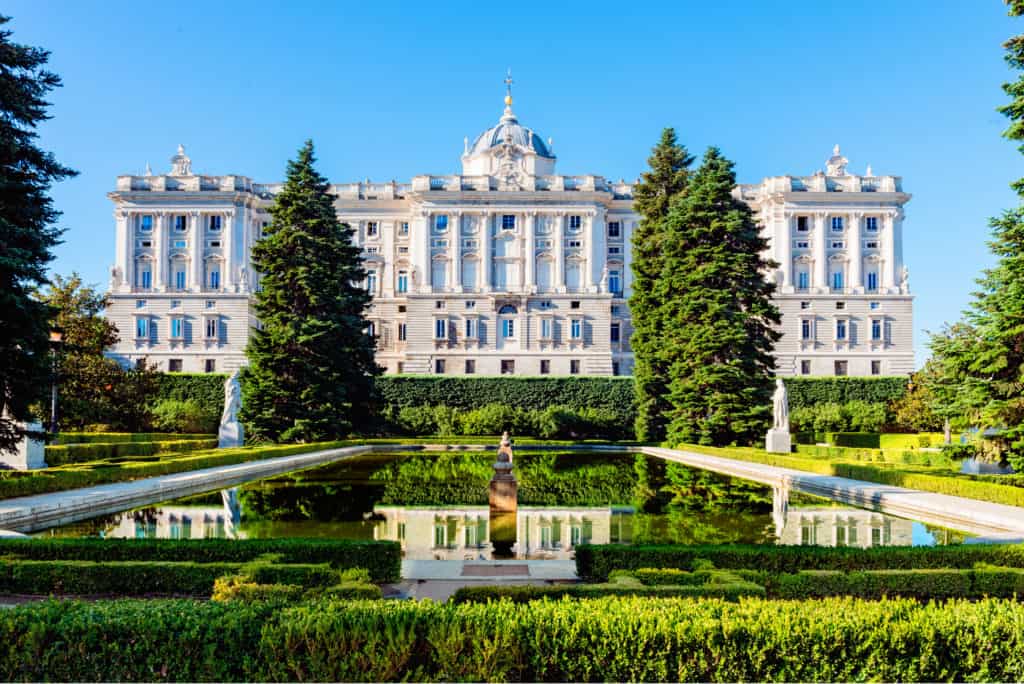
Royal Palace
Although the royal family no longer lives in the royal palace, this huge palace was built in the 18th century, comparable to the Versailles Palace in France, which is full of royal equipment. The palace continues to be used for official national activities.
On the corridor at the entrance, you can see the stairs with murals. The walls of the palace are hung with the works of Spanish masters such as Goya and Velasquez. Visit the beautiful Royal Apartment and don’t miss the Throne Hall with Tipolo murals. There is a rare collection of Stradivarius violins in the museum, which are still used to hold concerts!
From October to July, there is still a post change ceremony at 11:00 a.m. on Wednesday. Other attractions in the palace include the Royal Armory, which contains the weapons and armor collection owned by the Spanish king, the French style Campo del Moro Garden, the fountain and boulevard, and the Royal Pharmacy, which has beautifully decorated cabinets to store medicine for the royal family.
The ticket for tour without guide is 12 euros, and the ticket for Spanish guide is 16 euros.
The free ticket price for a guided tour of the palace is $37.38.
Enter its impressive square
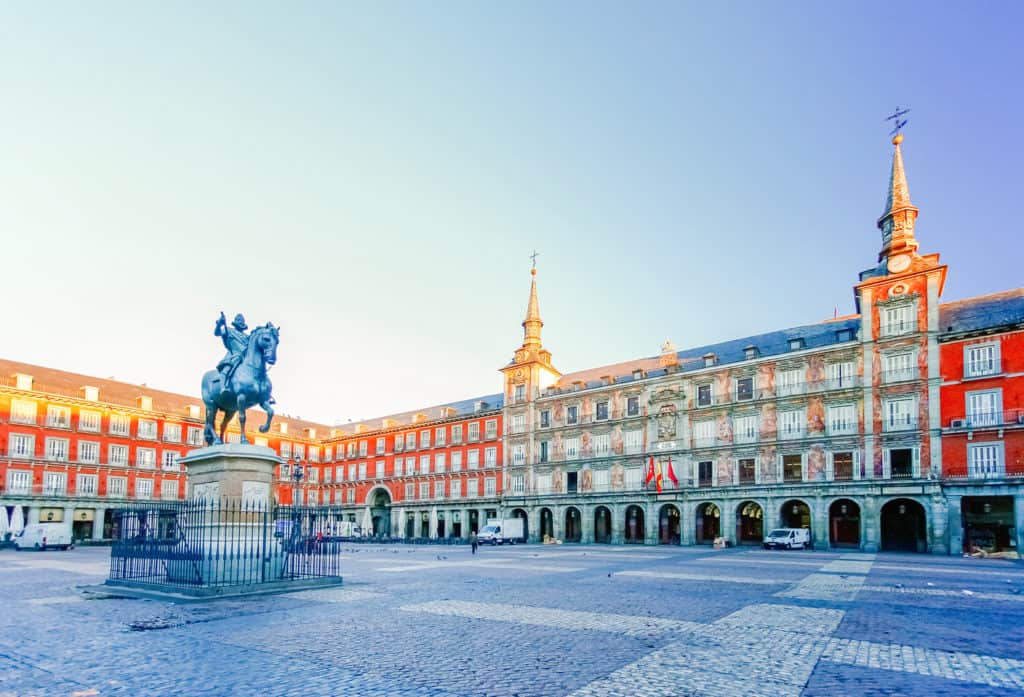
Mayor Square
Mayor Square is Madrid’s grand central square, located in the crowded streets of downtown Madrid. Look for the horseback statue of King Philip III in the center of the square, and enjoy the decorative exterior wall of the 17th century Casa de la Panaderia building (originally a bakery, now a tourist office in the city) and the wrought iron balcony.
This is a square with a long history, from the execution of the Spanish Inquisition to the bullring. Enter the square from one of the nine arched entrances. However, please note that there is no bench in the square to rest your tired legs, unless you pull up a chair in a restaurant or coffee shop under the arcade!
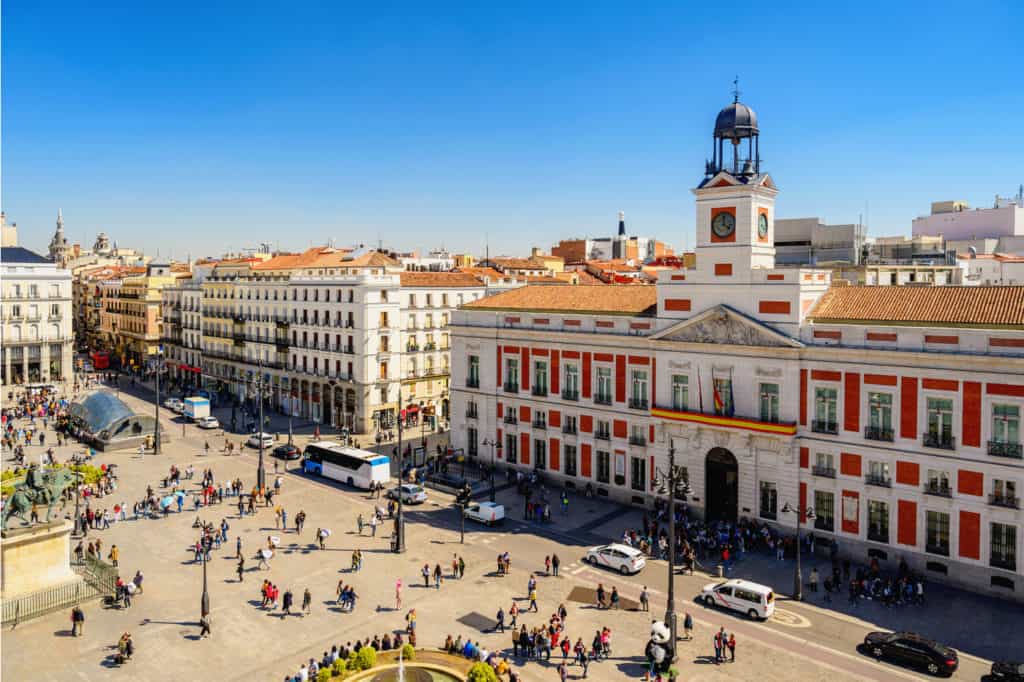
PUERTA DEL SOL
This is one of the classic gathering places in Madrid. At first, it was one of the city gates facing the east and was decorated with a sun image, so the square was called the “sun gate”.
The sun gate square is the origin of the distance mark of the Spanish national highway system. There is a lovely statue of a bear, which stretches its hind legs to the strawberry tree to pick fruit. The equestrian statue of King Carlos III is located at the center of the action.
The clock on the Casa de Correos building (built as a post office, but now the seat of the city’s regional government) is very famous in the New Year’s Eve celebrations, when people were waiting for the clock to strike midnight. Traditionally, local people eat one grape on each of the 12 gongs to celebrate the arrival of the New Year. Whenever you come, you can join the local people in the evening, when they go out for paseo por la noche or take a walk in the evening.
Appreciate its church

Cathedral de nuestra se ñ ora de la almudena
Other major cities in Europe have a major church with a long history and full of treasures, while Madrid does not. The cathedral was completed in 1992 and construction began in 1879. Spain’s concern about the discovery of the new world has long delayed the topic of building cathedrals in the previous centuries, while the Spanish civil war has delayed the ongoing project in the 1930s.
However, this is the main cathedral in Madrid and is worth seeing. From the top of the cathedral, you can see a good view. There is a magnificent bishop’s chapel, and there are other chapels in the cellar, with charming stained glass windows. A donation of 1 euro is required for the visit.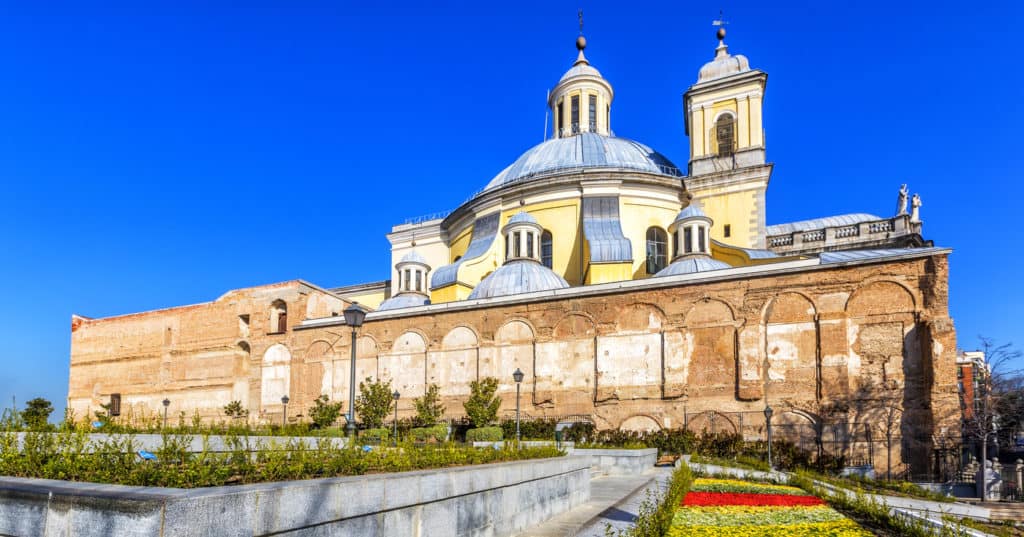
San Francisco – El Grande Cathedral
The magnificent Basilica of San Francisco el Grande, built in 1761, is a Franciscan monastery. Magnificent paintings fill the six chapels of the cathedral, including the masterpieces of ancient Spanish masters such as Goya, Velasquez and Zulbran.
The dome of the cathedral is the largest in Spain and the fourth largest in Europe, after St. Peter’s Cathedral and the Pantheon in Rome and the cathedral in Florence. The church is located in the oldest Latin American community in Madrid. Tickets are 5 euros, but you can enter free on Saturday.
Impact its best scenic spots
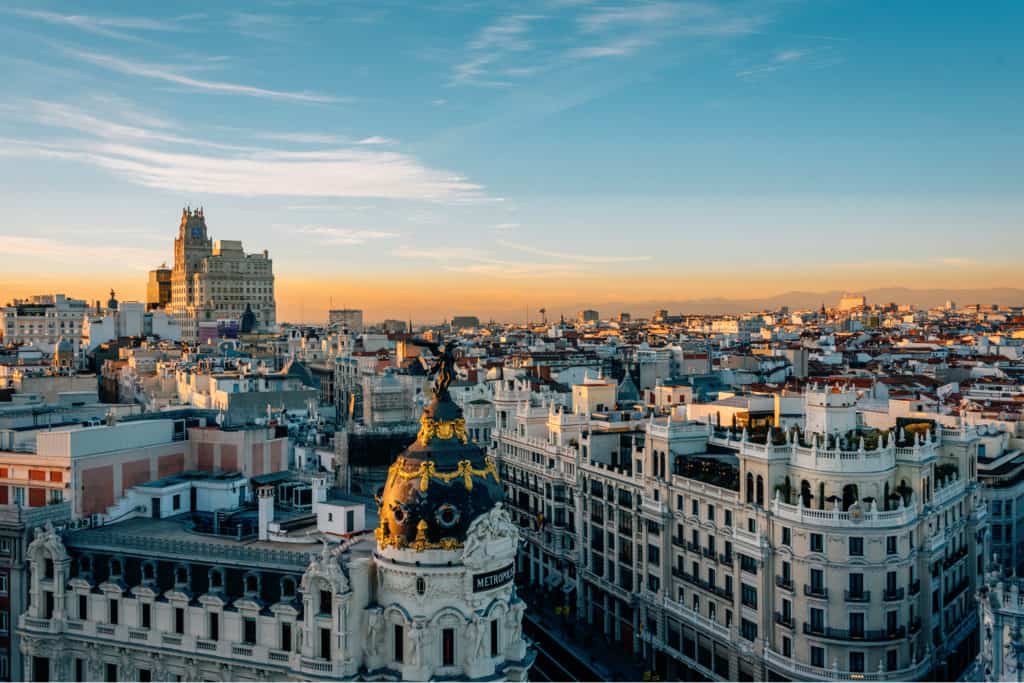
Art circles
Here, you can overlook the charming scenery of the city. C í rculo de Bellas Artes (CBA) is a private cultural center with exhibitions, theatres and concert halls, libraries and artist studios. There is a bar and a restaurant on the roof, with a spectacular view of Madrid. Tickets for the exhibition and roof are 5 euros.
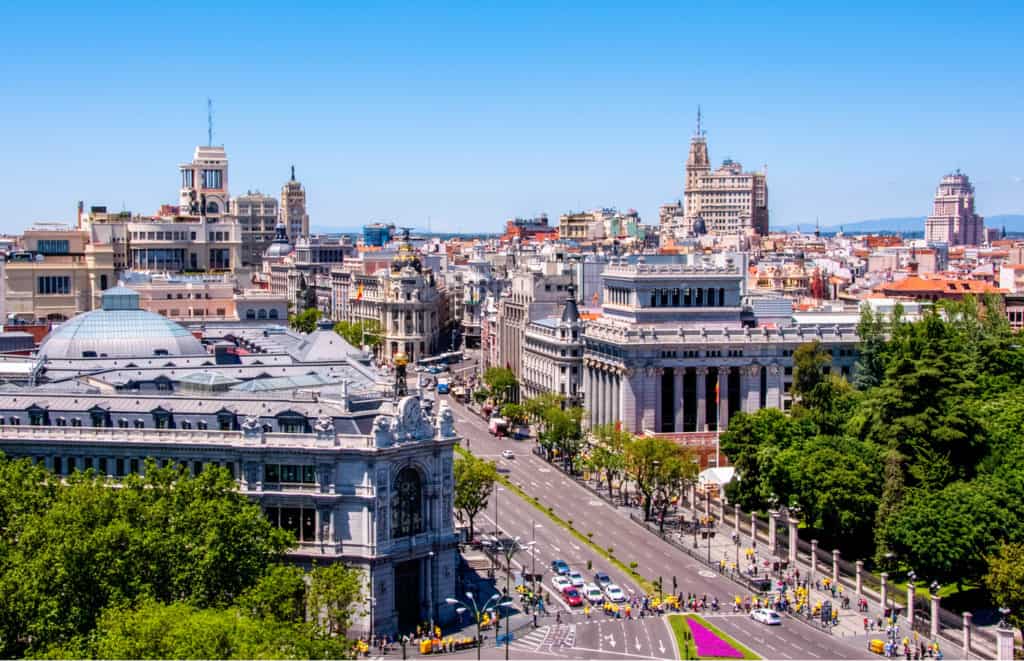
Madrid Mirado
Here is another good choice. You can have a bird’s-eye view of the city from the top of the West Belles Square area on Grand Avenue. The scenic spot is located at the top of the West Belles Palace. The general ticket is 3 euros.
Relax outside
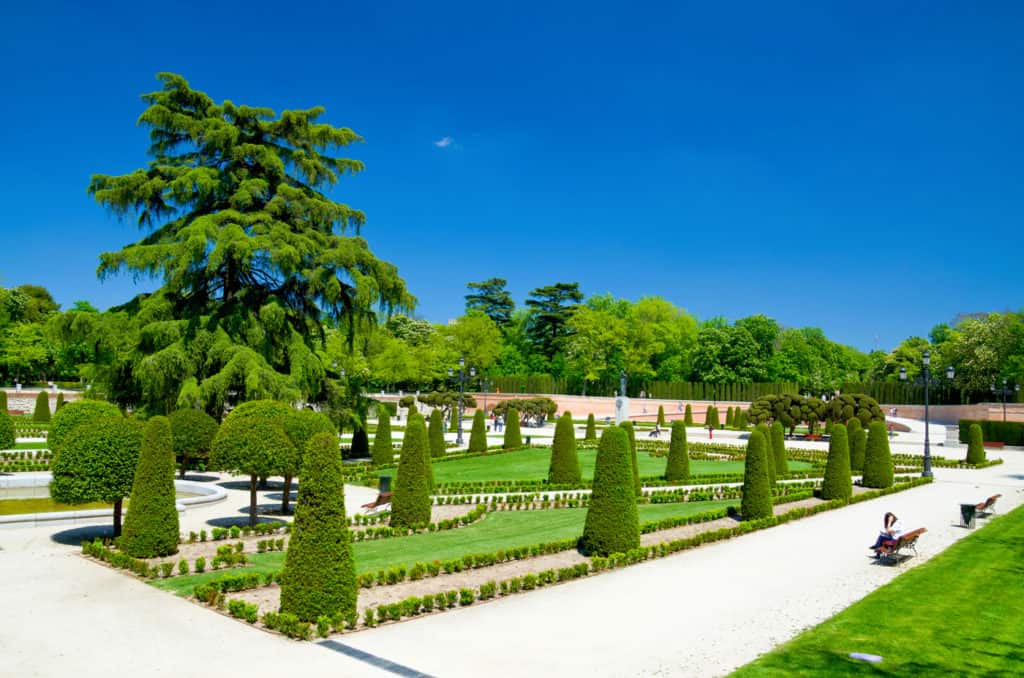
El Retiro Park
Everyone needs to get out of the heavy sightseeing of museums and churches. Carry out outdoor activities in the vast (292 acres) scenic Elletiro Park. It was originally reserved for the Spanish royal family, and was not finally opened to the public until 1868. From the lake to the Crystal Palace, it provides a lovely way to relax and enjoy the quiet environment.
Boat on the lake, go to the Crystal Palace built for the 1887 Philippine Exposition (then under Spanish jurisdiction) and see the exhibition, as well as the monument to King Alfonso XII. Other attractions in the park include the Fallen Angel, which is the only public statue depicting Lucifer in the world, as well as various gardens, which are all fun for walking.
You can take a two-hour secret walking tour of Retiro Park at $11.68 per person.
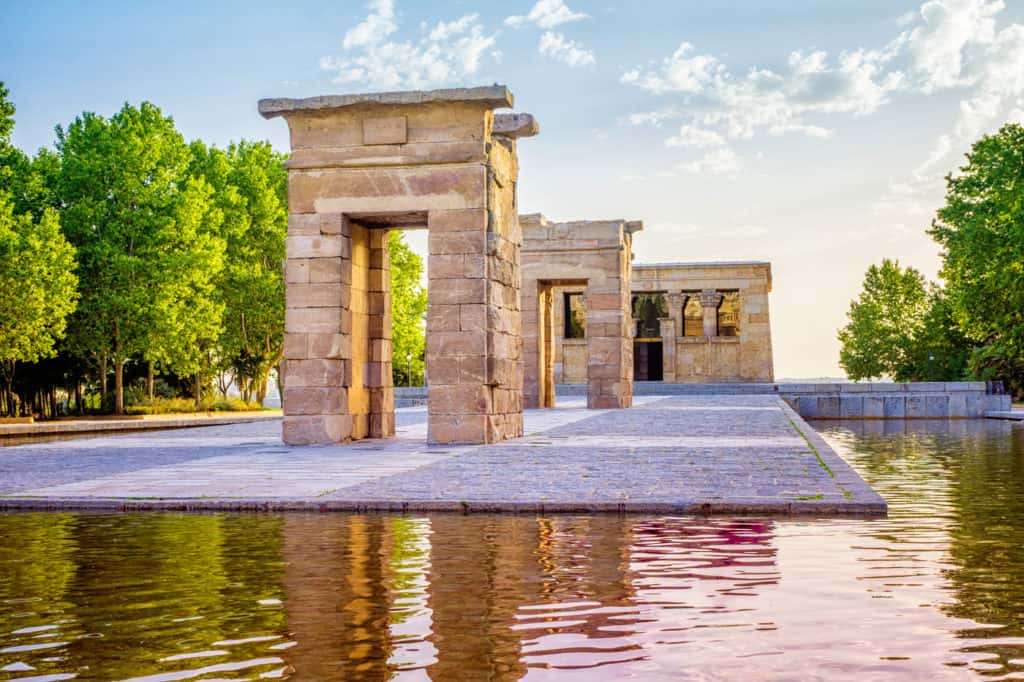
Temple of Debod
Who would have thought of finding a 2200-year-old Egyptian temple in Madrid? This temple is a gift sent to Spain after Spain assisted Egypt to repair the temple of Abu Simbel and other temples threatened by flood due to the construction of Aswan High Dam in the 1960s. It was opened to the public in 1972 and is a beautiful scenic spot, especially at sunset and at night when the monument is lit.
The best place to stroll in the city
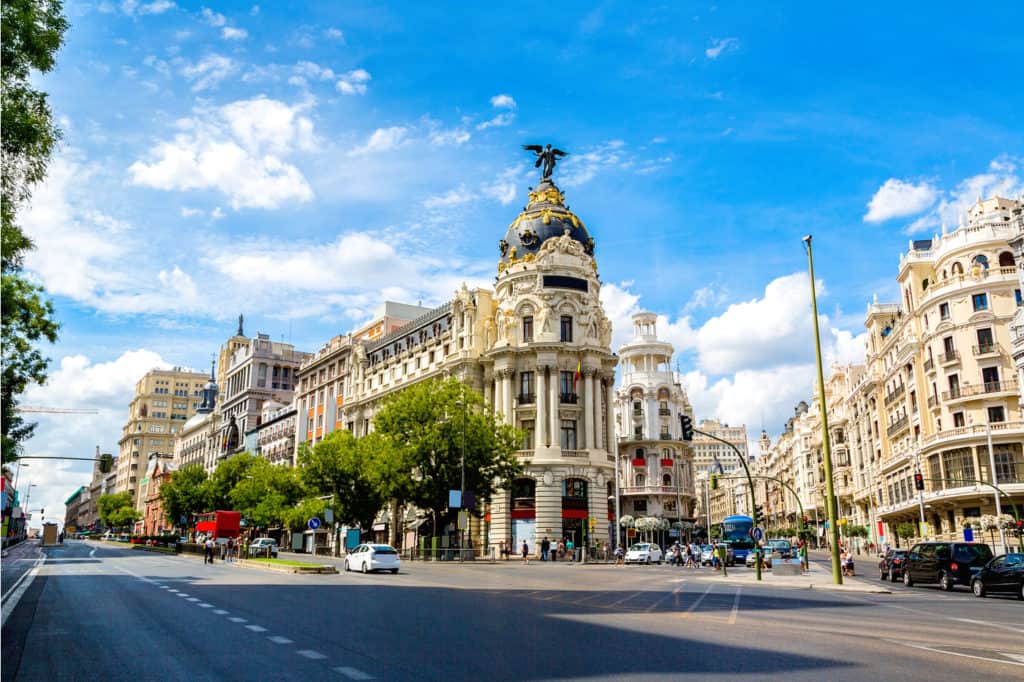
GRAN VIA
This is the main commercial street in Madrid, and it is also the location of several amazing buildings, such as the Spanish Telecom in the 1920s and the Metropolitan in 1907. There are flying victory statues on it. Palacio de Cibeles in 1919 is now the seat of the Madrid City Council. You can’t miss the spectacular Sibelis fountain in the center of the Sibelis Square, which represents the Greek goddess Sibelis standing on the chariot pulled by a lion.
When walking in Gran Via, you can visit the Jamon Museum. This is not a museum, but a shop and restaurant. It attracts Instagram users and hungry people because they see hundreds of ham hanging on the window
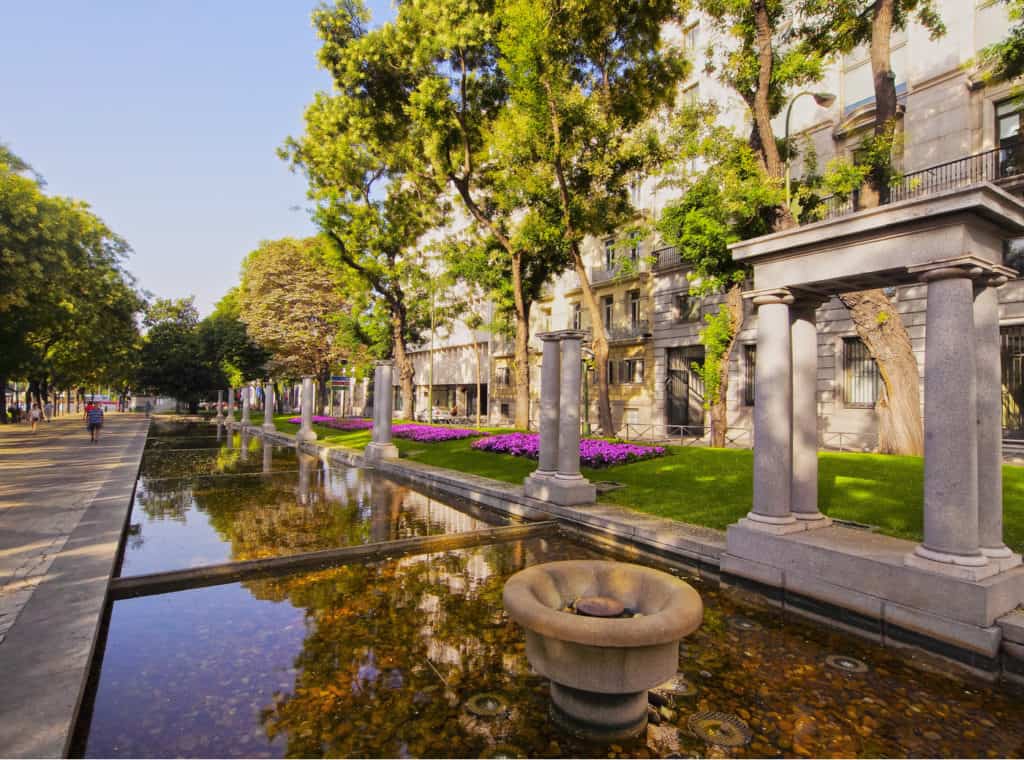
Paseo del Prado
This lovely and leafy avenue bypasses the three major art museums, but provides a pleasant walk opportunity. The open book market that passes by reminds people of the Paris shops on the Seine. Recently, Paseo and El Retiro parks have been granted UNESCO World Heritage status, which is the first place in Madrid to be granted such status. Pacio is the first tree-lined urban corridor in Europe. As early as the 16th century, citizens used it for leisure and entertainment.
Drooling over its seductive food and drink experience
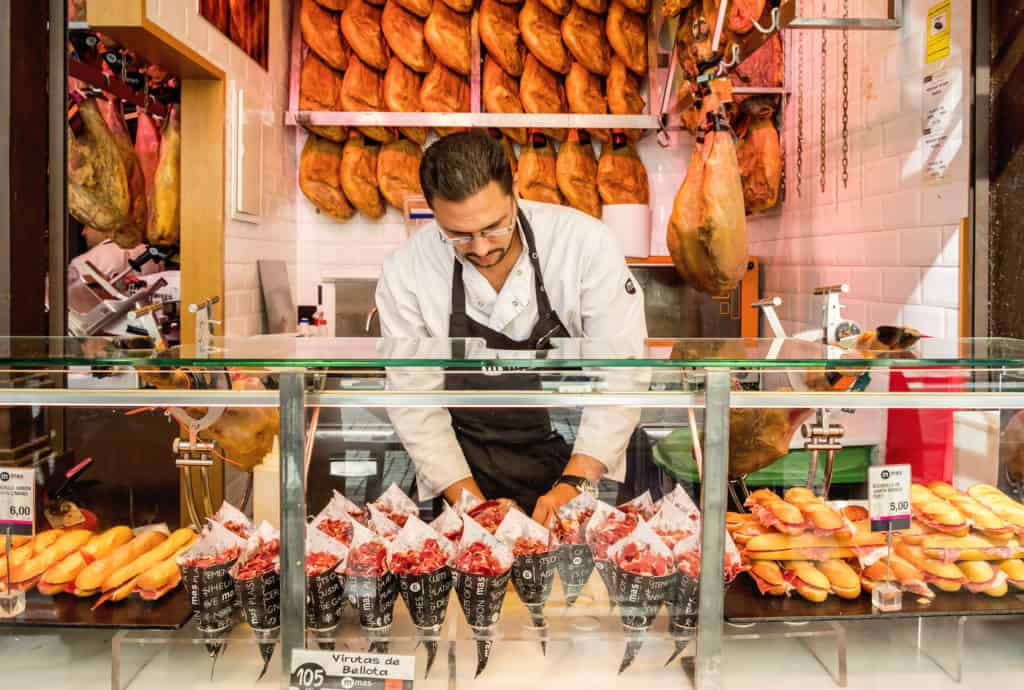
MERCADO DE SAN MIGUEL
This delightful food market combines the advantages of the real market, with fresh agricultural products, various restaurants and take-out food, and can resist hunger during those off-dinner hours. The San Miguel Market opened in 1916 and is located in a charming cast iron building with glass walls, not far from Mayor Square.
Browse the food stall or sit down to eat some snacks, or have a more complete meal in one of the restaurants. I personally like to include the big markets in Europe in my travels. You can not only see what local people are eating, but also have snacks or meals to pass your sightseeing time. Not only that, the agricultural products, cheese, meat, fish, cakes, etc. displayed can usually provide a good theme for your photos.
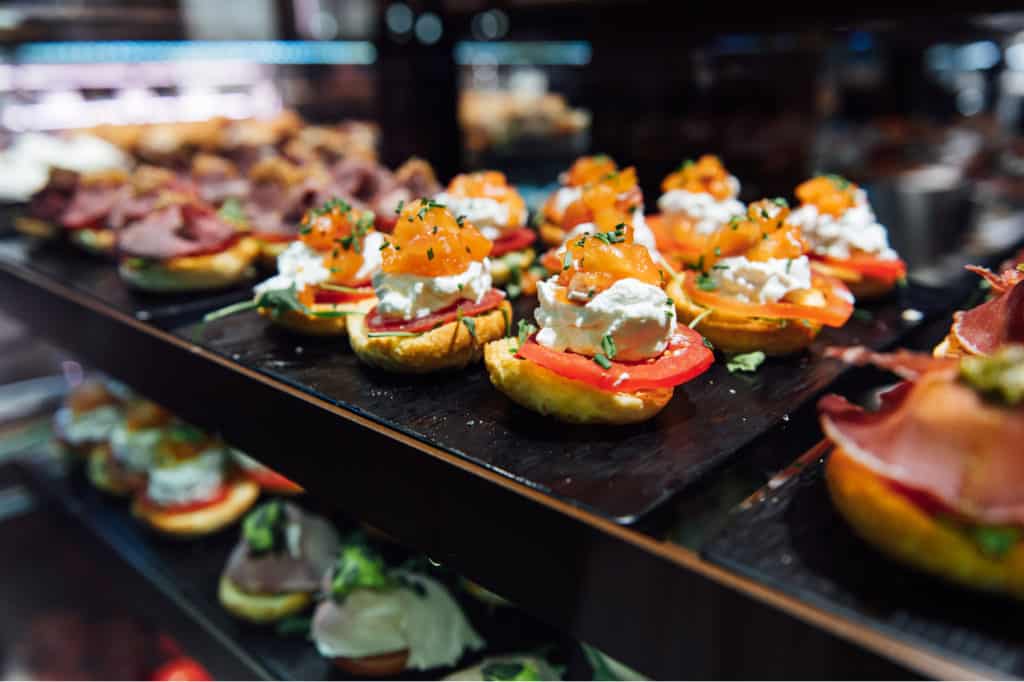
Trip and tourism in Tapas
Ah, those delicious snacks called tapas can be promoted as an artistic finger food in restaurants around Madrid. If you are new to Tapas, you can enter a crowded bar and look at a series of small dishes on the counter or the menu of dishes provided. If you have any questions, you can ask the bartender what is good, then order a few small plates to share, and then take beer or your favorite aperitif, you can enjoy delicious snacks safely.
Because Spaniards often eat dinner late, you can make your side dishes simply spend the dinner, or go to several bars to eat side dishes, and spend an evening there (and dinner)! This is a very interesting experience and will make your life more colorful. This is an interesting experience, which will provide you with a window to understand the Spanish food scene and how local people like to spend the night. Your snack crawling can be carried out in one or more blocks of the city. The two places I recommend are La Latina and Barrio de las Letras. By the way, one of my favorite local sandwich foods is Bocadillos de Calamares, which is filled with crispy squid rings.
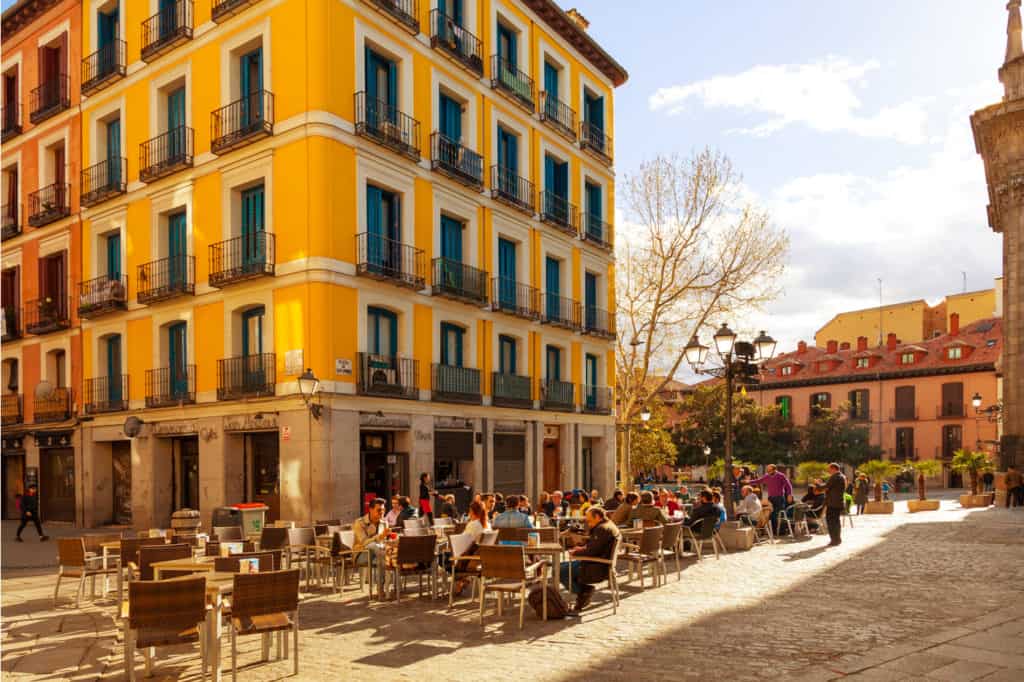
Bario Della Latina
Here is another good place to taste snacks. In the daytime, you can visit San Francisco Cathedral here, and then cook some pre-dinner snacks nearby. The dinner time in Madrid is very late, so it is very meaningful to crawl on the narrow labyrinth street and taste snacks, which can help you through the difficulties until the arrival of dinner. One of the best snack streets is Calle Cava Baja.
Maybe you want to get some expert guidance in your food roaming. If so, here are some tapas and food tours led by local people to help you find the best scenic spots. One is a four-hour evening trip to Tapas, tavern and history, which takes you to the four family-run Tapas Bar, and the other is the morning’s ultimate Spanish food trip, which introduces the local cuisine of Madrid by taking you to half a dozen local restaurants and a market to taste food. The adult fee for both tourist routes is 109 euros.
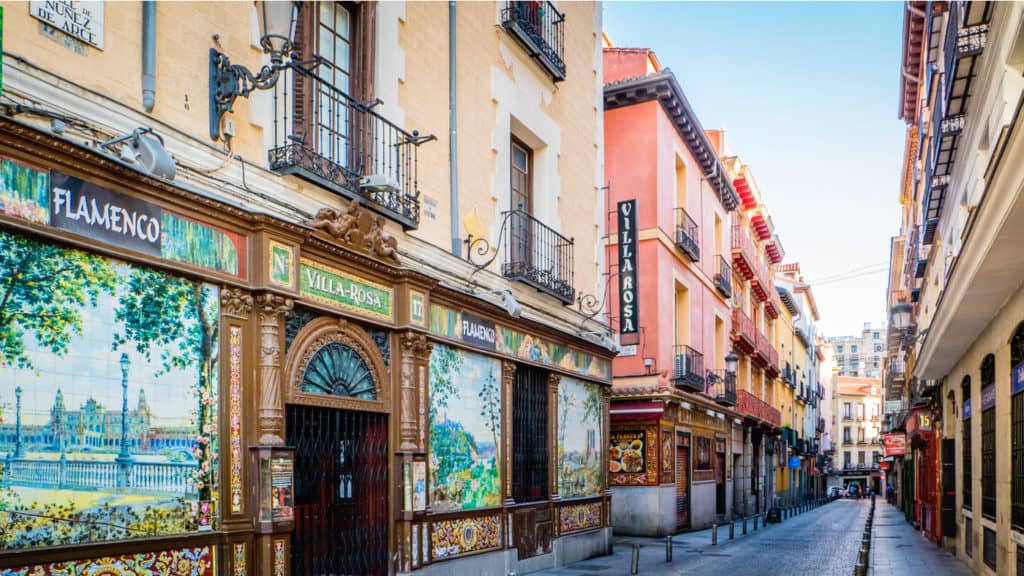
Barrio de las Letras
Barrio de las Letras (literary district) is named after the literary residents such as Miguel de Cervantes and Lope de Vega who once took it as their home. It is the best place for you to go out and eat in a pub or restaurant at night. The Spanish theater here has theatrical performances, as well as the flamenco dance theater.
If you want to get the expert opinion of the local people, you can consider this four-hour private nightlife trip, where you can specify the type and place of activities you want to see, so as to really understand how the nightlife in Madrid is celebrated
Historic restaurants and canteens
Madrid has many restaurants with a long history waiting for you to find, including the oldest restaurant in the world. As for exquisite catering, there are 19 Michelin-star restaurants in the city to look for (by 2021).
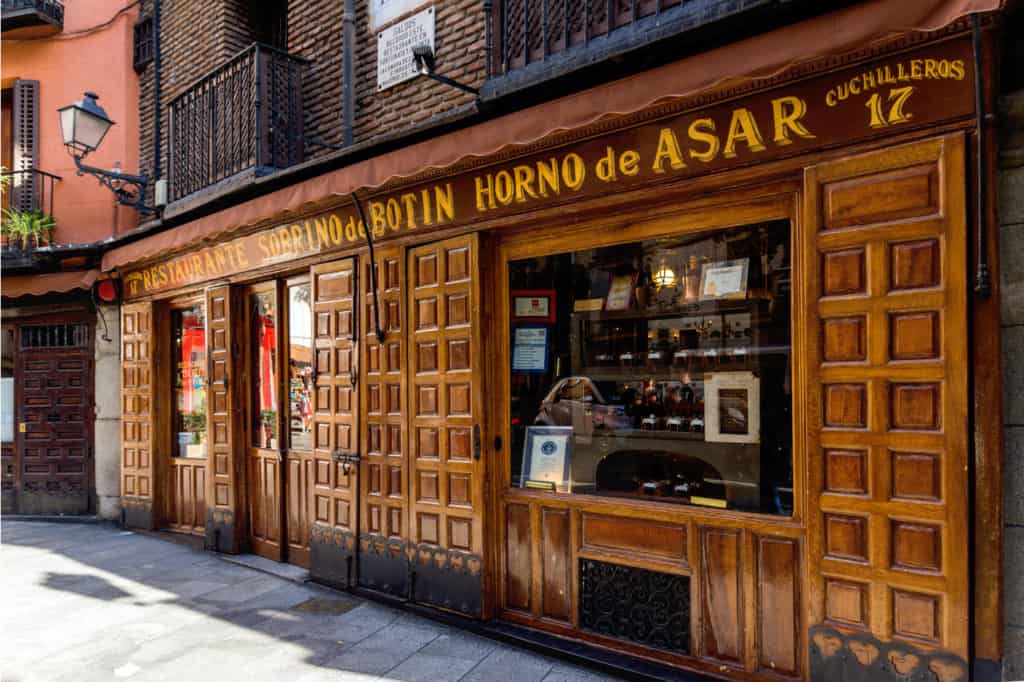
Potin suckling pig
Personally, I like Roasted sucking pig or Roasted baby pig very much. This oldest restaurant certified by Guinness Book of Records specializes in this dish. Sobrino de Botin was founded in 1725 and still uses the original oven. I also happened to like Hemingway’s book. He often visited this place in the 1930s and wrote about this restaurant in The Sun Also Rises.
For those who want to know more about this historic institution, there is even a Botin experience tour, visit the wine cellar and kitchen area, and then enjoy a meal. The visit cost 78 euros per person, 45 minutes, followed by lunch or dinner (the visit time is 12 noon or 7 p.m.).
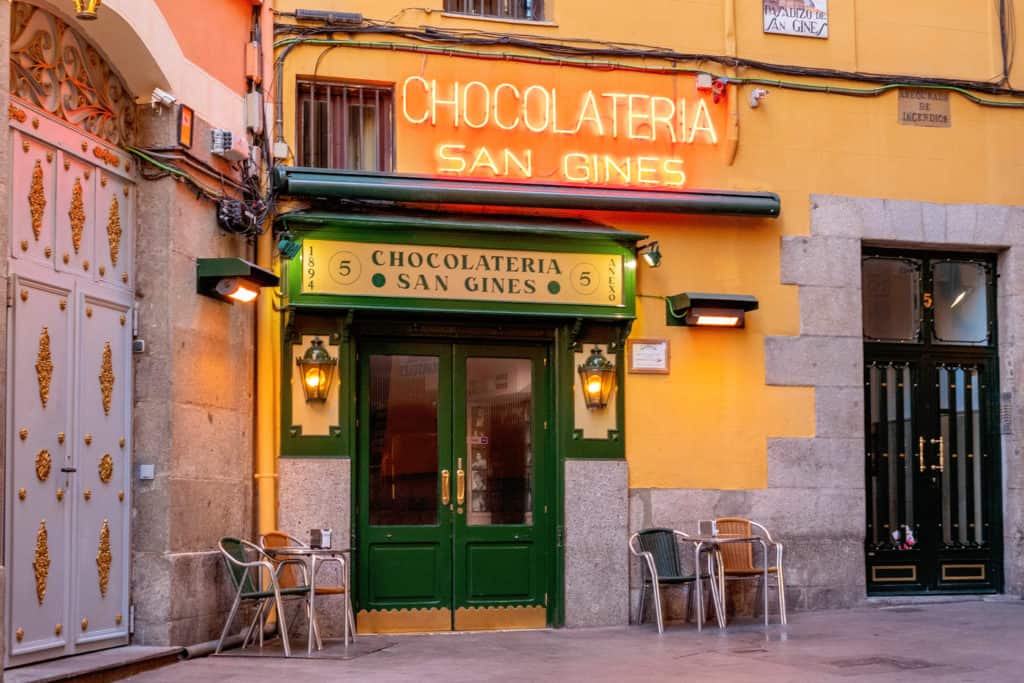
St Guinness Chocolate Shop
Here, you can eat chocolate and fried food at any time of the day. Churros is a kind of hot noodles with sugar, and found the perfect partner in a cup of hot chocolate. I remember when I ordered this in a coffee shop in Madrid, I found the chocolate was so thick that the chocolate bar almost stood in it! I’m surprised. This is different from any other hot chocolate I have ever eaten. This is a 24-hour delicacy, which has been served by Saint Guinness since 1894.
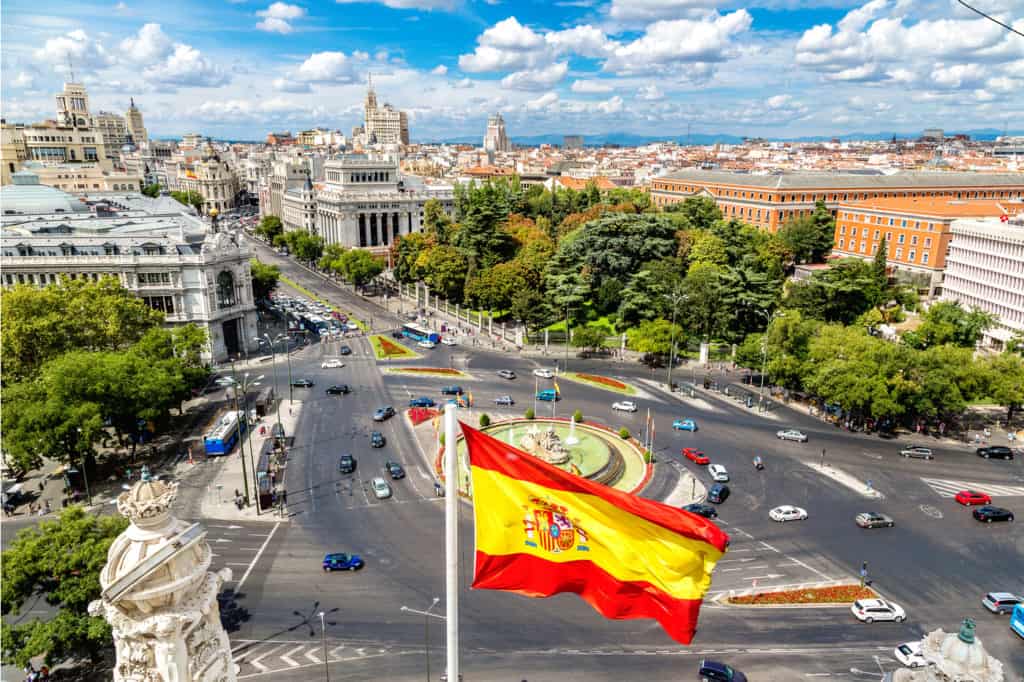
Madrid is worth spending at least a few days in Spain, and you may wish you could allocate more time. From its incredible series of great museums to its centuries of history, to the bustling nightlife and a series of tempting food experiences, Madrid will reward your taste and soul.
Take time to study its spectacular art, watch Las Meninas and Guernica from a close distance, marvel at the room of the palace, take a break in the tree-lined El Retiro Park, and watch people in the plaza of Plaza Mayor and Puerto del Sol. Whether you are an art lover, a gourmet or a nightlife lover, Madrid will provide you with a wonderful experience.